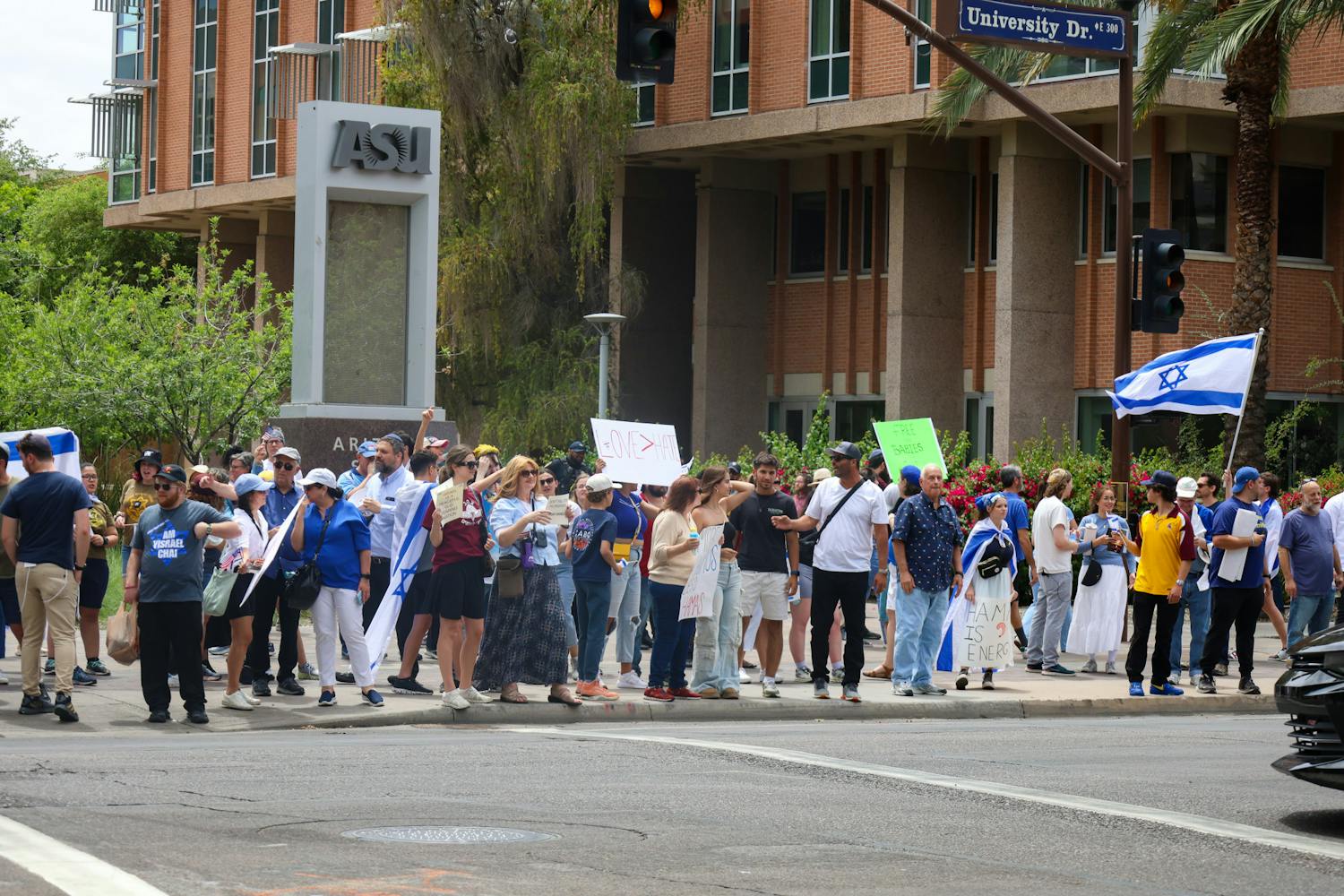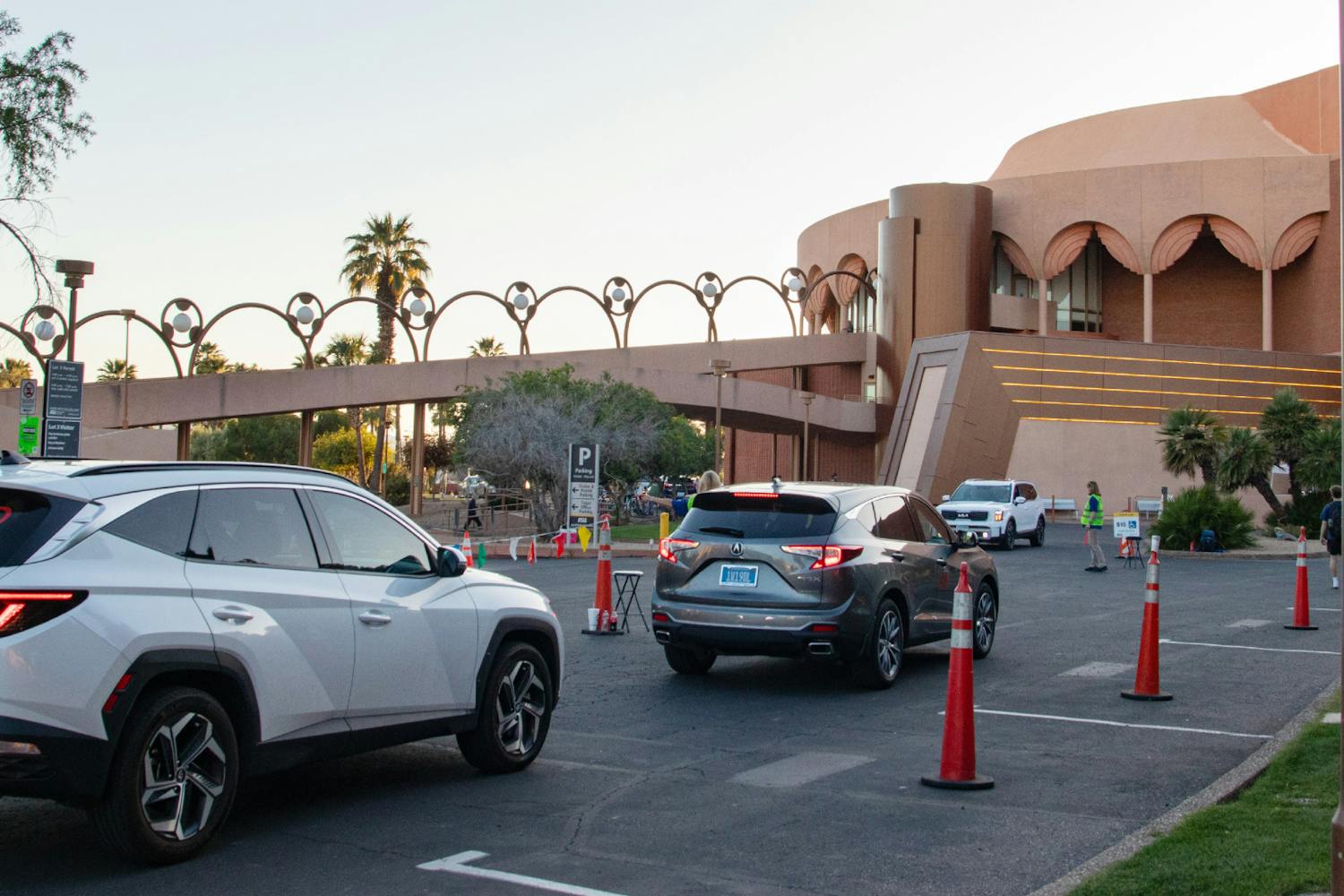Claire Kaplan had already started discussing new solutions to the University of Virginia's sexual assault problem with other administrators when an article was published that would alter the institution’s reputation forever.
Kaplan, director of the Gender Violence and Social Change program at UVA’s Maxine Platzer Lynn Women’s Center, said any campus could become the subject of an article like the now-infamous “A Rape on Campus” in Rolling Stone, which harshly criticized UVA administration's policies regarding sexual assault on campus.
“It can happen to you, too,” she said, advising other colleges, “You never know when the shoe will drop.”
Amid a heated national debate about rape culture on college campuses, Arizona’s universities continue to develop their own approaches to sexual assault. Despite these efforts, some say success with this issue will be elusive.
Environment of scrutiny
In the past few years alone, there has been a great deal of commotion surrounding the issue of campus rape, both in the media and the federal government.
In 2013, the Campus Sexual Violence Elimination Act, or the Campus SaVE Act, required nearly all universities to increase transparency about sexual assaults on campus, increase the rights of victims, standardize college conduct proceedings and provide rape prevention education.
In January 2014, President Obama created the White House Task Force to Protect Students from Sexual Assault, which was designed to help institutions improve the techniques they use to combat the issue.
Three months later, the U.S. Department of Education’s Office for Civil Rights announced a list of 55 universities under investigation for violations of the sexual violence portions of Title IX, a federal law prohibiting discrimination based on sex.
ASU was on the list.
Much to be done
Kaplan said although universities are responsible for their students, investigating crime is not their expertise.
“A lot of people get mad at colleges for not handling these issues, but colleges are educational institutions; they’re not the criminal justice system,” she said. “If we have a community or an environment where these types of crimes are not tolerated and that shows up through the culture and through the policy and through what is being done, then that will be possible.”
Universities must enlist the help of the entire community, including local law enforcement, to effectively combat this widespread issue, Kaplan said.
“Campuses have this issue where if the criminal justice system was working in a way that addressed these crimes ... and were doing it accurately, we wouldn’t be having this conversation,” she said. “There are a lot of law enforcement agencies that are doing really good work and are creating a space where survivors feel comfortable coming forward and they do really good investigations and they actually have trials and people get convicted. That’s a miracle unto itself.”
Kaplan said one of the chief issues colleges face when fighting rape culture is simply a lack of adequate staffing.
“Of course we’ve had programs here all along, but they obviously weren't adequate because there’s just not enough people to do the work,” she said. “We still don’t. I don’t know that any campus does, to be honest.”
Laura Palumbo, a prevention campaign specialist at the National Sexual Violence Resource Center, said each university has a unique set of challenges when it comes to sexual assault.
“There’s not one universal solution because no two campuses are the same environment and the culture isn't the same across any two campuses, so I think this raises the need for investment at the institutional level,” she said. “Administrations need to show their commitment and there needs to be a lot of challenging analysis of campus policies, campus culture and the environment overall to create comprehensive solutions.”
After reviewing ASU’s recent developments in programs aimed at preventing rape, including the Consent and Respect module and the Sun Devil Support Network, Palumbo said ASU is heading in the right direction.
“Taking the steps to implement new programming and to create new tools for students does show a really strong level of institutional commitment to addressing the issue of sexual violence,” she said. “What I would recommend to ASU, is to ask their students how effective these tools are. ... Are the things that (students are) learning from this consistent with the goal of creating culture change or is it just checking off the box of a regulation? I think students should be really involved in informing that process.”
Programs at Arizona’s public universities
Just as Palumbo said each university faces its own unique challenges, Arizona’s three public universities are each taking unique approaches to the issue of sexual assault.
At UA, the Oasis Program within the Campus Health Department specializes solely on sexual assault, relationship violence and stalking.
Megan McKendry, a violence prevention specialist for the Oasis Program, said having a separate program for sexual assault is extremely beneficial.
“I think it’s a topic that deserves a great deal of attention, because it’s a big problem on college campuses,” she said. “To have a center or program targeting this issue can be powerful, and by having the program, you're also linking students to services by increasing your visibility on campus.”
McKendry said she often incorporates students into the Oasis Program’s work through internships. For example, students can conduct focus groups or facilitate workshops about prevention techniques.
“I really try to center students in the work because it’s important to me that their voices are heard because they're the population affected by this issue,” she said. “It’s a good prevention practice to involve the people who are directly affected.”
The Oasis Program offers counseling, advocacy for survivors, confidential rape reporting and prevention workshops. McKendry said UA plans to focus next on implementing more widespread prevention education, though this training is not expected to be mandatory.
While UA’s Oasis Center chiefly handles treatment and prevention, efforts at NAU seem more oriented toward education.
All incoming freshmen and new students are required to take an alcohol and sexual violence online course, while some groups deemed to be high-risk, such as members of Greek life and athletes, participate in bystander training.
Melissa Griffin, Health Promotion Manager at NAU’s Campus Health Services, said an online version of the bystander training will soon be required of all freshmen as well.
“The online courses are the best way to go because they reach the most people with the fewest number of human resources,” she said. “There’s no way that I and my one-person team could do in-person training for the entire freshman class. This allows us to reach a larger population.”
Other than the online courses, NAU also distributes annual anonymous health surveillance surveys to its students, which asks them if they are survivors of attempted or completed sexual assault.
ASU has seen a similar focus on education, with the requirement of all students to take the online Consent and Respect module as well as the announcement earlier this month of a required Title IX online course for all faculty, staff and student workers.
The Sun Devil Student Network was also recently created as a peer advocate network for rape victims. So far, 24 students have completed the necessary training.
There have been prevention efforts as well, as a campus culture task force was created to measure yearly changes in sexual violence as well as awareness of related ASU resources.
ASU employs one full-time sexual violence prevention education health educator in Education Outreach and Student Services, as well as five health educators who work with this issue with a portion of their time. Student staff members in ASU Wellness work to implement prevention programming.
Jennifer Hightower, deputy vice president of student services, said ASU’s allocation of resources to the cause of combating sexual assault shows its commitment to the issue.
“Sexual violence is a really important issue for us in the academic community, and it’s important for us in the educational community to think about ways in which we can become more aware, ways we can eradicate sexual violence in society,” she said.
Reach the reporter at elmahone@asu.edu or follow @mahoneysthename on Twitter.
Like The State Press on Facebook and follow @statepress on Twitter.







